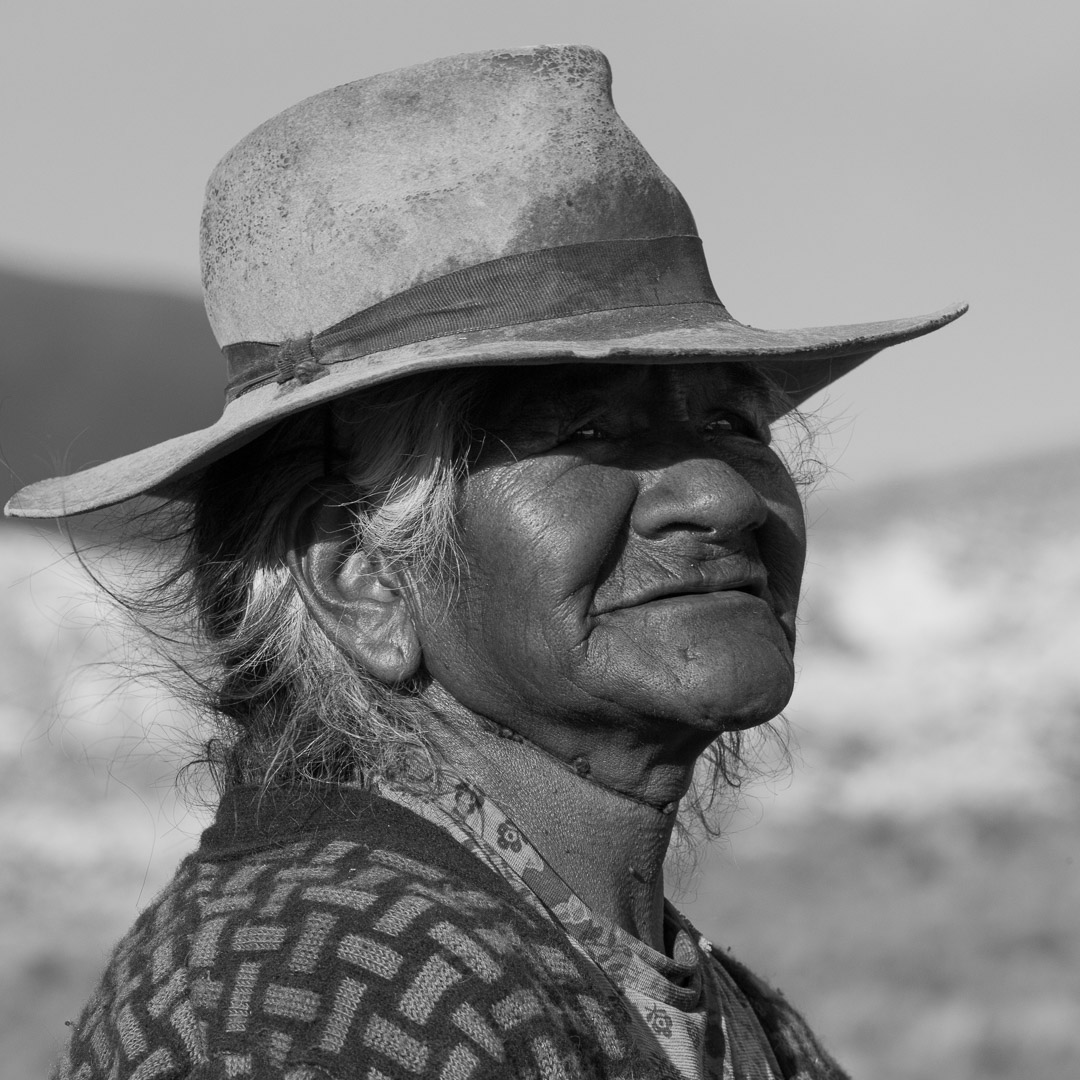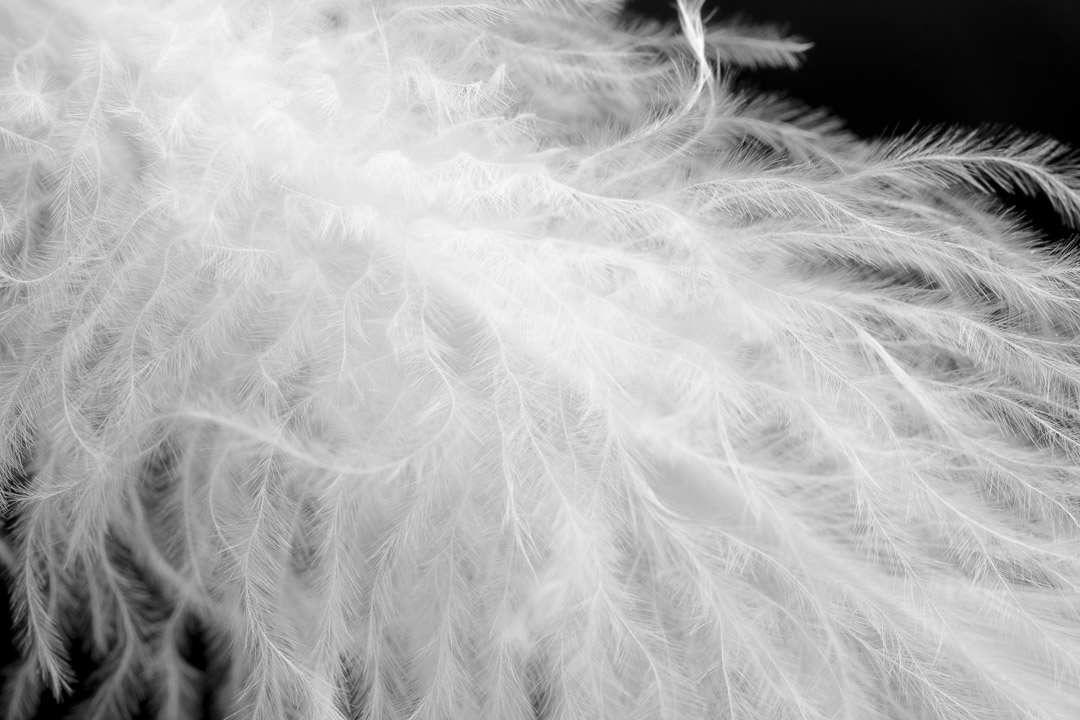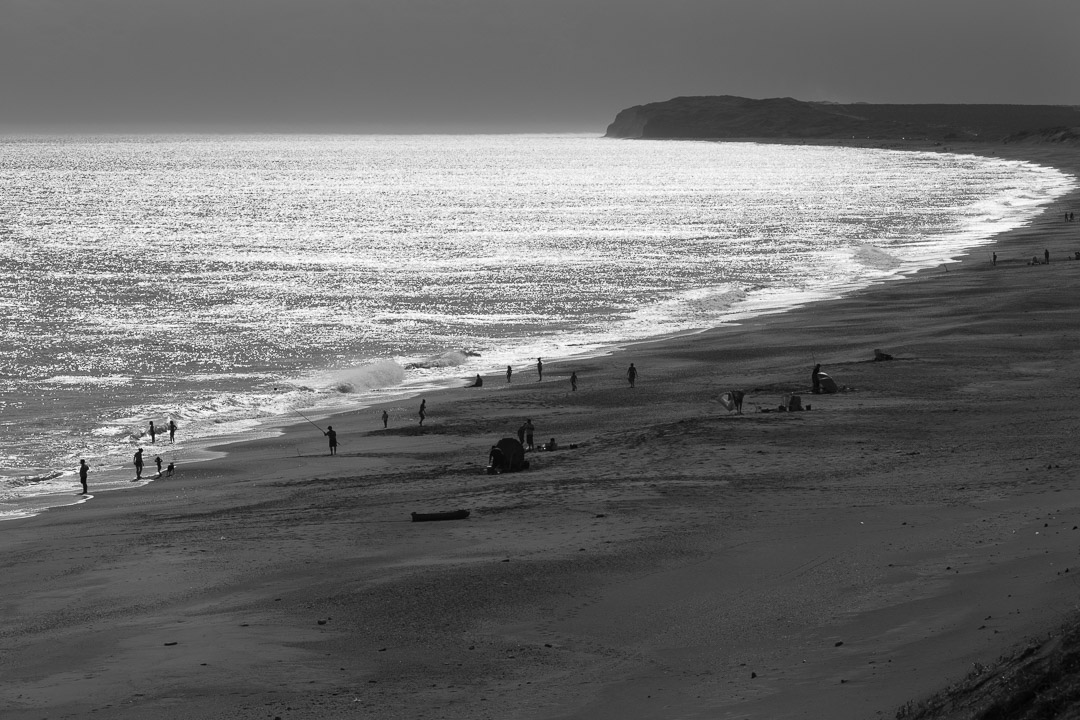The human eye can differentiate up to 450 shades of grey.
We met this woman as she was herding her Llamas over the high Andean Puna in Argentina. She was reticent when we met and frowned when I produced a camera. I offered her a bar of Cadbury’s chocolate we had brought out from the UK and her face lit up. Faces are made to smile not to frown.
But when it comes to colour it is thought we are sensitive to a 100 million distinct colours. As photographers therefore our belief is that a photograph taken in black and white greatly simplifies the image. Stripping out the unnecessary detail of colour leaves behind outlines and shapes so important in composition.
Flamingoes live and even breed at altitudes up to 15,000 ft in the Andes. The climate for animals is as harsh as anywhere in the World. Under their outer coat of feathers they have a thick undercoat of the most delicate feathers imaginable. This macro photograph shows their fine structure.
Paula and I on our ‘Living Wild in South America’ expedition are using our cameras every day. Our eyes are bombarded by stimuli and often we have to think hard as to how best to photograph a scene before us.
This is a beach on Argentina’s Atlantic coast. The fishermen had colourful tents on the beach, distracting from the more important people.
The curvature of the bay is enhanced by the striking interplay of light on the sea.

Imagining what the image will look like in Black and White, before we press the shutter, is a strategy that helps us.
We were driving along an interminable road across the Atacama desert. It was almost featureless and baking hot. This was an image that shouted out to us as we drove past. We quickly pulled over and waited for the traffic to ease off. This is just how we remember the Atacama.



